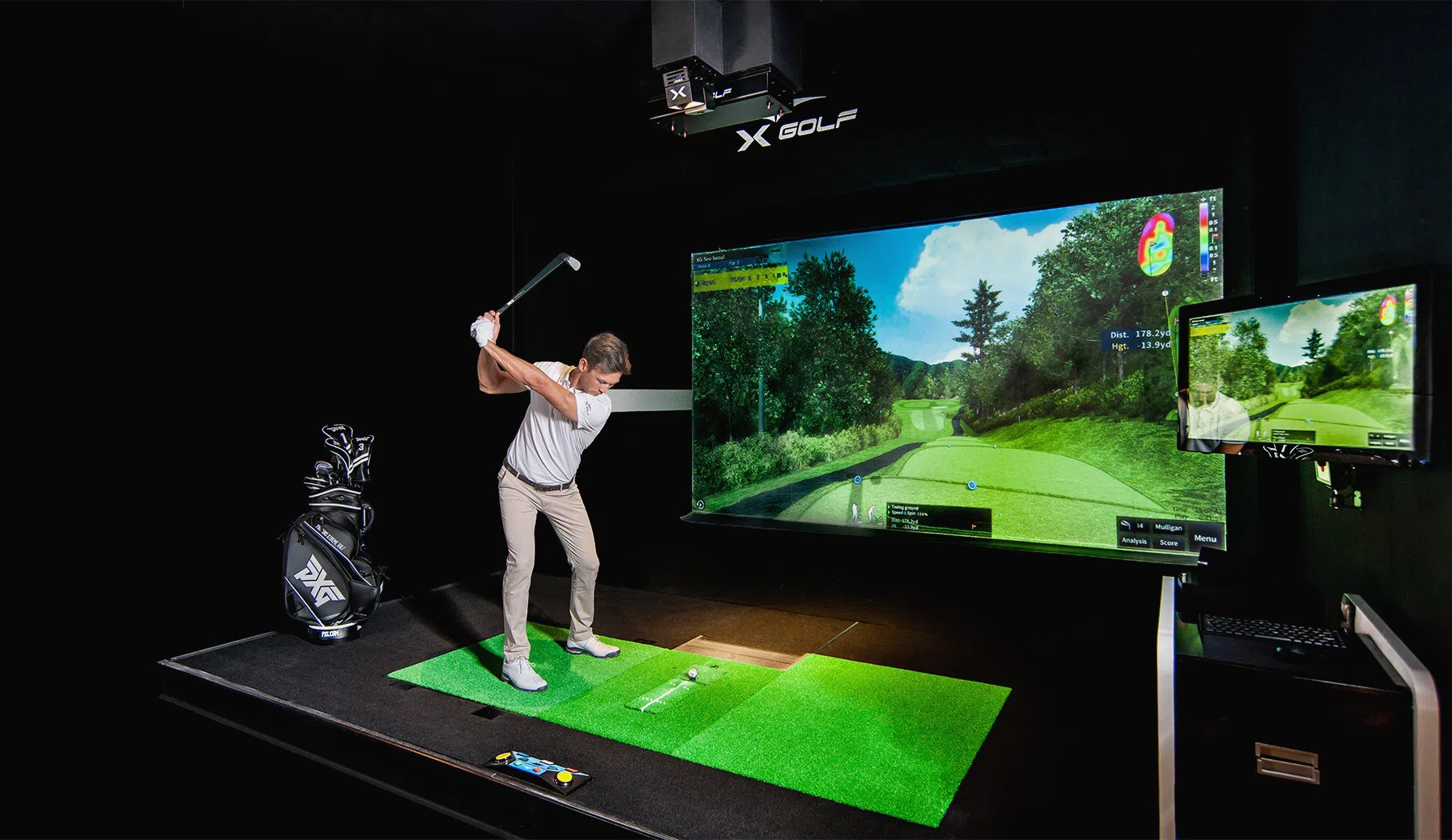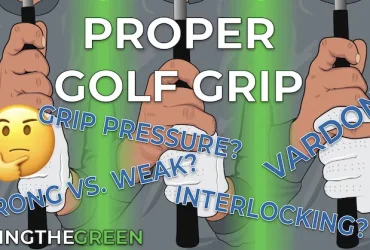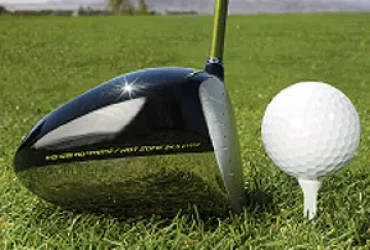How Accurate Are Golf Simulators?

Once you get the golf bug, it’s hard to let go. When you can’t be at the course, you may be thinking of the course; when you can’t be holding a golf club, you may be practicing your grip in a work meeting. There is no question that the love for this game runs deep.
Golf simulators used to be something only golf manufacturers and rich people could afford. This has changed completely. At home golf simulators have become very accessible for a wide range of golfers. People are using them to practice their game and to play golf matches with their friends.
However, the question often comes up about how accurate golf simulators are. Does it always seem like you play better on the simulator? Do you always play worse?
In this guide, we will help you get to the bottom of the golf simulator accuracy mystery!
Contents
How Accurate Are Golf Simulators?
Golf simulators vary in accuracy. Some models are going to be better than others because of the technology they use to collect data. When you get data from a golf simulator, it is because different sensors have picked up information, done calculations, and then reported this information back to you.
If some of the sensors are not working or not set up correctly, then you will not get accurate results. If you are only using one type of sensor to collect data about your golf game, you will also lose some accuracy. There are several different ways that a simulator uses to pick up information about your golf game.
How a Golf Simulator Gathers Information
These are the most common ways that a golf simulator will collect information about your golf swing and your golf shot.
- Camera: High-speed images are taken of your entire swing but primarily through impact. The impact position will give the simulator a great deal of valuable information about both the ball and the clubface.
- Radar: A Doppler radar is used in some simulators to help track ball flight.
- Optical Sensors: Some optical sensors are placed in and around a hitting surface. The optical sensor can help determine ball speed and several other swing dynamics.
- Infrared Light: Infrared light waves are capable of picking up valuable information as well. You may be able to get numbers on the launch angle and direction while using an infrared method.
Variety In Accuracy
If you go to a golf fitting day at your local golf course and hit some shots on the TrackMan Launch Monitor, you are going to get some very reliable results. You must remember that some TrackMan systems can cost over $100,000. If you are not spending this type of money on your at-home simulator, then you must leave a little room for error.
We cannot say that the more you pay for a simulator, the more accurate it will be because that is just not true. The more correctly tuned your simulator is, and the more ways you have of picking up your golf swing data, the more accurate it will be. This can be done sometimes for $1500, and other times it will take $5000.
Does The Mat Affect Golf Simulator Accuracy?
Yes, some people believe that the mat you hit off of will affect the accuracy of your simulator. All true golfers know that hitting off a mat and hitting off the turf can be two different things. When purchasing a mat for your indoor golf simulator, try to choose something that has as close to a grass feel as possible.
A higher-quality mat will give you better results with your simulator. Higher quality mats are also better for your hands and wrists long term. We love golf simulator setups where you are standing at the same level as the golf ball. IF you can afford a full-size mat that you can stand on, it will undoubtedly help increase the accuracy of your simulator.
Check out golf pro Rich Shiels taking on the FSX skills challenge before.. a great test for the accuracy of a golf simulator!
What If My Golf Simulator Seems Off?
You just received your brand new golf simulator, and you step up to hit your first shot. You usually hit your seven iron about 150 yards. After a few practice swings, you step up and hit what feels like a great shot. When you look at the simulator, it reported that your total carry was 80 yards. This is a mistake. This has nothing to do with accuracy.
When you first set up your golf simulator, it is going to take some time to calibrate it properly. Make sure that all of your sensors and cameras are correctly connected and positioned. Check your simulator software to make sure that it is calibrated, and it works for your location as well. See if there is information you can put in about you as a player.
Remember that a golf simulator is simply a data communicator. The more accurate the data you can give the simulator, the more precise the results that you would get. Now, if you make some tweaks to your simulator and it shows you are hitting your seven iron 148 or 155 that is certainly in the realm of being acceptable from an accuracy standpoint.
DON’T MISS: Our Recommended Golf Simulator Projectors!
Conclusion: Should I Trust A Golf Simulator?
We believe you should trust your golf simulator until it gives you reason not to. If you are looking to purchase new golf clubs and the rep is telling you that you are hitting a driver 320 yards, meanwhile, you never hit it more than 220, this sounds like an issue. Trust a simulator within reason.
If you have just spent the winder practicing in your home simulator and you want to head out to the course to see how things feel outside, there could be an adjustment period. This does not mean that your simulator is inaccurate. It merely means that swinging a club indoors and swinging a club outdoors can feel different.
When working with any technology, you must allow for some room for error. However, golf simulators have come a long way from the original models, and they are accurate machines.



